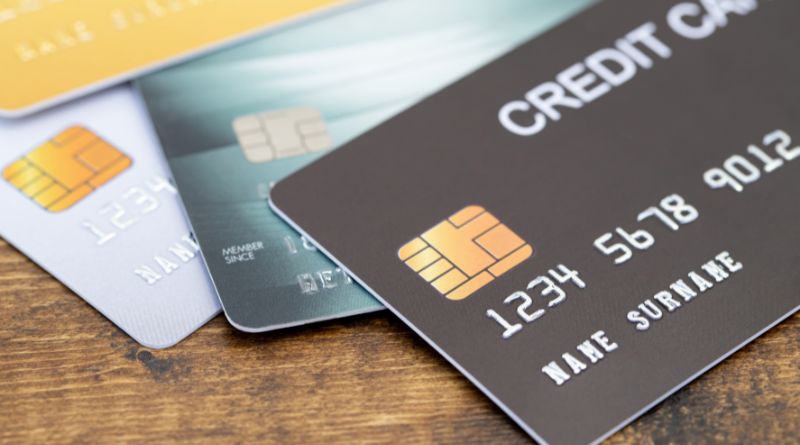Introduction:
Are you struggling with managing your credit card payments? You’re not alone. Navigating the world of credit card payments can be a daunting task, especially when it comes to understanding the intricacies of interest rates, due dates, and minimum payments. It’s no surprise that so many people find themselves overwhelmed, unsure of how to tackle these challenges. But fear not – we are here to help! In this blog post, we promise to provide you with a comprehensive solution to the problems surrounding credit card payment management.
We will walk you through an overview of the essential aspects of credit card payments, from understanding your statement to creating a plan for timely payments, proving that you’re in the right place for expert advice. By addressing the pain points you’re experiencing, we’ll make it our mission to turn your credit card payment woes into a thing of the past. So, let’s dive into the world of credit card payments and equip you with the knowledge you need to gain control over your financial life.
Outline:
I. Understanding Your Credit Card Statement A. The importance of reviewing your statement B. Identifying key components: balance, minimum payment, due date, interest rate C. How to read the fine print
II. Strategies for Timely Credit Card Payments A. Setting up payment reminders B. Automating your credit card payments C. Using budgeting tools to plan for payments D. Tips for avoiding late fees and penalties
III. Reducing Credit Card Debt A. Prioritizing high-interest debt B. Utilizing balance transfer offers C. Negotiating with your credit card company D. Implementing debt repayment strategies
IV. Maintaining Good Credit Card Habits A. Monitoring your credit utilization ratio B. Regularly checking your credit report C. Building an emergency fund to avoid reliance on credit cards D. Tips for responsible credit card usage
V. Conclusion A. Recap of the solutions provided B. Encouraging readers to take control of their credit card payments
I. Understanding Your Credit Card Statement

It’s crucial to review your credit card statement every month to keep track of your spending and ensure you’re meeting payment deadlines. When you receive your statement, take note of the balance, minimum payment, due date, and interest rate. These four components play a vital role in managing your credit card payment.
Understanding your balance means understanding how much money you owe on your credit card. Your minimum payment is the least amount you’re required to pay to avoid late fees, while your due date is the deadline for payment. Your interest rate is the percentage charged on your balance if you carry it over from month to month. Knowing these key components of your statement can help you make informed decisions when it comes to managing your credit card payment.
But what about the fine print on your statement? It’s essential to read the fine print to understand any fees or charges associated with your account. For example, your credit card company may charge you a fee for cash advances, balance transfers, or foreign transactions. Understanding these charges can help you avoid unexpected fees and stay on top of your credit card payment.
II. Strategies for Timely Credit Card Payments

One of the most significant challenges of credit card payment management is ensuring timely payments. Late payments can lead to hefty fees and damage your credit score. To avoid this, consider implementing the following strategies:
A. Setting up payment reminders Many credit card companies offer payment reminder options via email or text message. These reminders can be a helpful tool to help you remember your due dates and make payments on time.
B. Automating your credit card payments If you’re worried about forgetting to make a payment, consider setting up automatic payments. You can choose to pay the minimum balance, the full balance, or a specific amount each month. This strategy can help you avoid late fees and improve your credit score.
C. Using budgeting tools to plan for payments Creating a budget can help you manage your credit card payments by giving you a clear understanding of your finances. You can use online budgeting tools or apps to keep track of your income and expenses and plan for upcoming payments.
D. Tips for avoiding late fees and penalties Late payments can result in hefty fees and damage to your credit score. To avoid this, try to pay your balance in full each month or at least the minimum payment by the due date. You can also consider contacting your credit card company to request a due date change to better align with your pay schedule.
III. Reducing Credit Card Debt

Credit card debt can accumulate quickly, making it challenging to pay off. However, there are several strategies you can implement to help reduce your debt.
A. Prioritizing high-interest debt High-interest debt can quickly become unmanageable, so it’s important to prioritize paying it off first. Start by identifying which credit card has the highest interest rate and focus on paying off that balance while making minimum payments on other cards.
B. Utilizing balance transfer offers Many credit card companies offer balance transfer offers, allowing you to transfer high-interest debt to a card with a lower interest rate. This can help you save money on interest and pay off your debt more quickly.
C. Negotiating with your credit card company If you’re struggling to pay off your credit card debt, consider contacting your credit card company to negotiate a lower interest rate or a payment plan that works better for your financial situation.
D. Implementing debt repayment strategies There are several strategies you can use to pay off your credit card debt more quickly, such as the snowball or avalanche method. The snowball method involves paying off your smallest balance first and then moving on to larger balances, while the avalanche method involves paying off the highest interest rate balance first. Consider which strategy works best for you and implement it into your debt repayment plan.
IV. Maintaining Good Credit Card Habits

Maintaining good credit card habits is essential for long-term financial success. Here are some tips to help you stay on track:
A. Monitoring your credit utilization ratio Your credit utilization ratio is the amount of credit you’re using compared to your credit limit. A high credit utilization ratio can negatively impact your credit score. Try to keep your credit utilization ratio below 30% to maintain a healthy credit score.
B. Regularly checking your credit report It’s important to monitor your credit report regularly to ensure there are no errors or fraudulent activity. You can request a free credit report from each of the three major credit bureaus once a year. Check for any discrepancies and report them immediately.
C. Building an emergency fund to avoid reliance on credit cards Building an emergency fund can help you avoid reliance on credit cards in case of unexpected expenses. Aim to save three to six months’ worth of expenses in an emergency fund to provide a cushion for unexpected costs.
D. Tips for responsible credit card usage Responsible credit card usage means using credit cards wisely to avoid debt and maintain a healthy credit score. Some tips include paying off your balance in full each month, avoiding cash advances, and not maxing out your credit limit. It’s also important to understand the terms and conditions of your credit card agreement to avoid any surprises.
Conclusion
In conclusion, credit card payment management can be challenging, but it’s essential for long-term financial success. By understanding your credit card statement, implementing strategies for timely payments, reducing your credit card debt, and maintaining good credit card habits, you can take control of your financial life.
Recapping the solutions provided, we recommend reviewing your credit card statement every month, setting up payment reminders or automatic payments, prioritizing high-interest debt, monitoring your credit utilization ratio, and building an emergency fund.
We encourage you to take control of your credit card payments and implement these strategies to improve your financial health. With the right tools and knowledge, you can navigate the world of credit card payments with confidence and achieve your financial goals.







